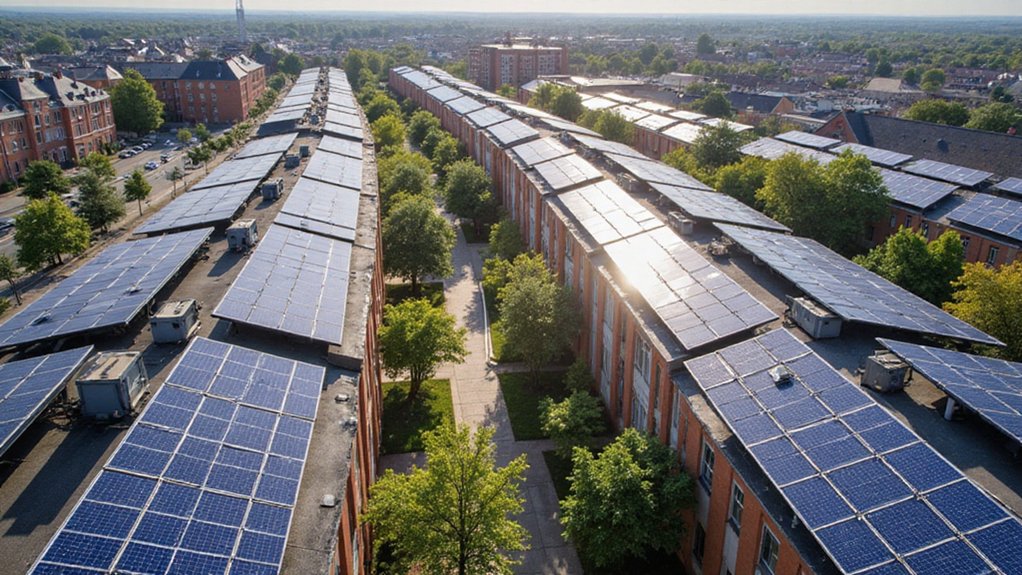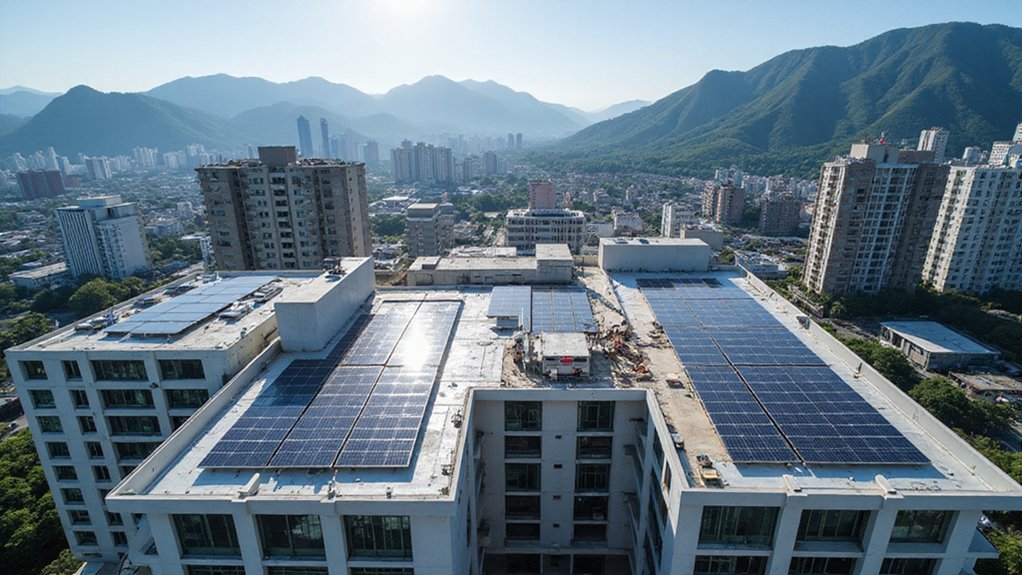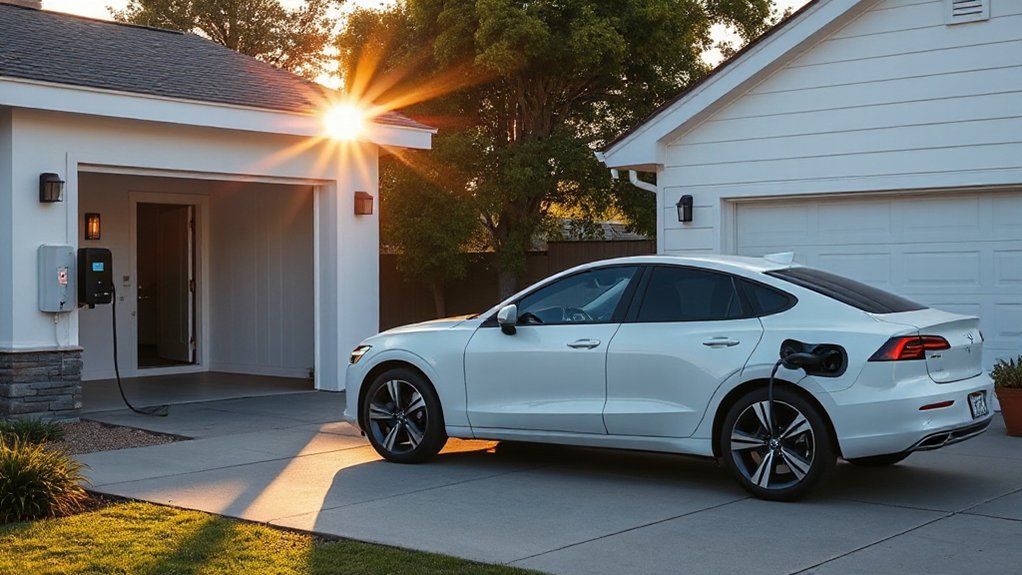As the world frantically searches for ways to cut carbon emissions, scientists have developed a material that might actually make a difference. It’s called PDA-CuO composite, and it’s not just another fancy lab experiment that’ll never see daylight. This stuff works.
The composite combines polydopamine (PDA) with copper oxide (CuO) particles and integrates them with polymers like SEBS and PW. Sounds complicated? It is. But here’s what matters: it converts sunlight to heat with nearly 48% efficiency. That’s almost half of all solar energy, captured and ready to use. No small feat.
Science doesn’t need to be simple to be revolutionary. 48% solar efficiency changes everything.
Buildings waste enormous amounts of energy on heating and cooling. These PDA-CuO materials change that equation by absorbing solar energy during the day and releasing it at night. Like a thermal battery for your walls. They maintain shape stability through countless phase changes, which means they don’t turn to useless goop after a year of use. Who knew reliability could be so revolutionary?
The really clever bit is how these composites work. PDA serves as both a binder and nanofiller, improving how CuO particles distribute throughout the material. This creates better thermal properties while maintaining structural integrity. Translation: it works better and lasts longer. The PDA component enhances adhesion through active functional groups that create strong interactions with both the CuO particles and building surfaces.
What’s surprising is the versatility. These composites can be applied as coatings on panels, incorporated into window films, or integrated directly into wall insulation. Old buildings? New constructions? Doesn’t matter. They’ll work anywhere. With U.S. electricity demand rising by 3% annually, these materials could play a crucial role in offsetting growing energy needs. If you encounter issues accessing research on these materials, contact information for researchers is typically available through academic institutions.
There’s an environmental bonus too. The materials reduce indoor air pollutants thanks to PDA’s photocatalytic properties. Yes, your walls could actually clean your air while saving energy. Talk about multitasking.
Scientists have tested these materials through countless thermal cycles. They hold up. They perform consistently. They might just be what we need to transform our energy-guzzling buildings into something much smarter. And honestly, it’s about time.
References
- https://papers.ssrn.com/sol3/Delivery.cfm/82ac753d-26c0-43ef-ac64-3a2e289c445f-MECA.pdf?abstractid=5459137&mirid=1
- https://pmc.ncbi.nlm.nih.gov/articles/PMC9758413/
- https://papers.ssrn.com/sol3/papers.cfm?abstract_id=5459137
- https://pubs.acs.org/doi/abs/10.1021/acssuschemeng.0c02959
- https://www.sciepublish.com/article/pii/274








